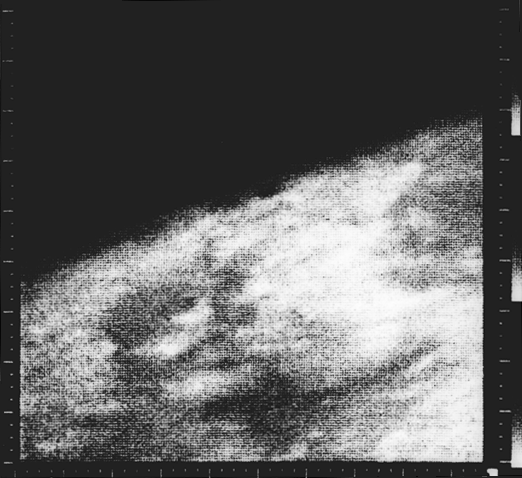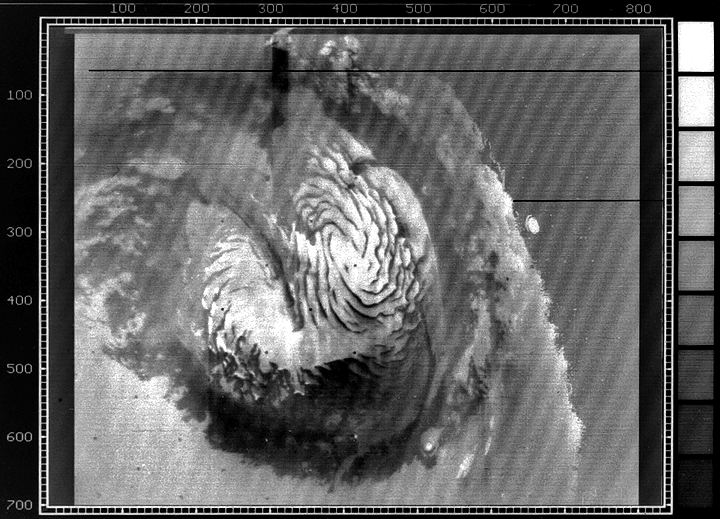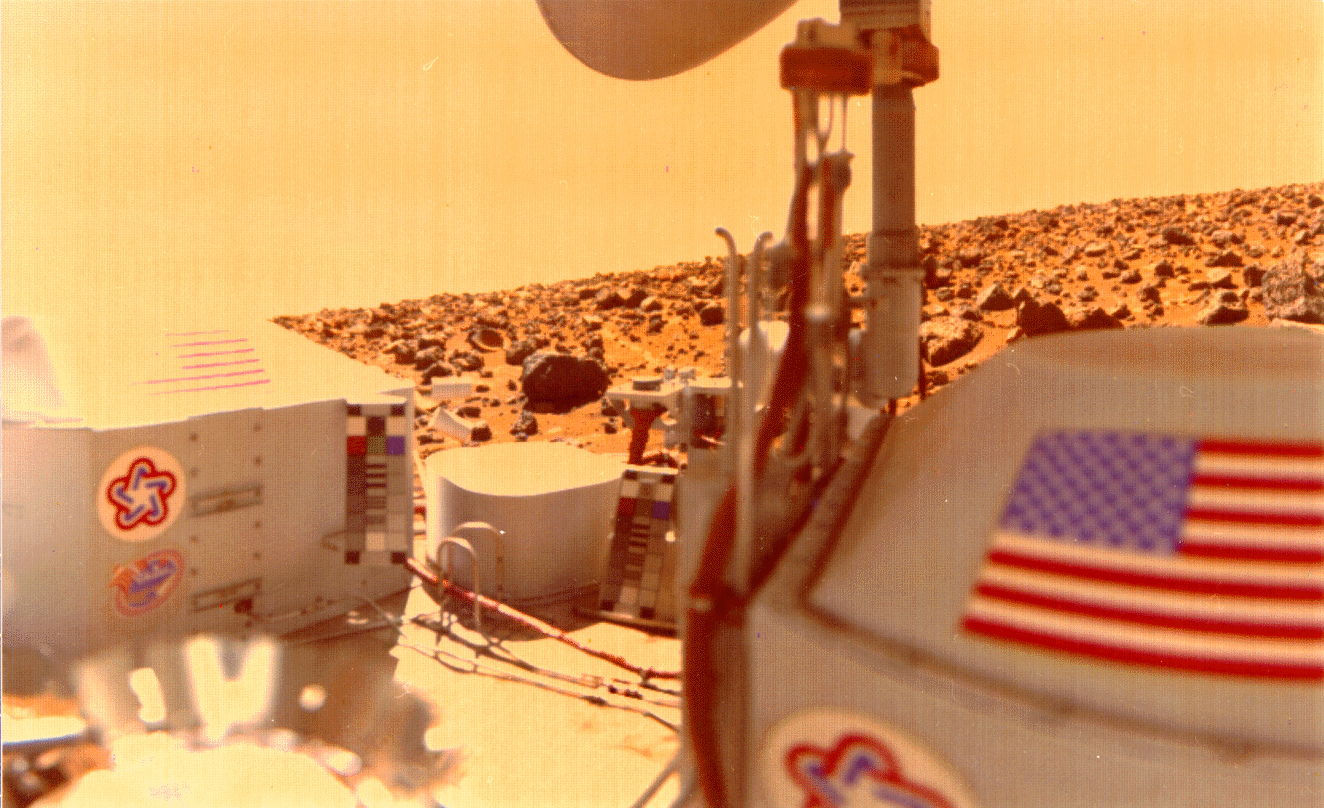More Space Myths Busted: There Were Mars Missions Years Before Viking
I was reading an online article recently (source redacted) that characterized the Vikings as the first robotic missions to visit Mars. While the Vikings made the first successful landings (read: returning useful data) upon the Red Planet, they were far from the first spacecraft to explore our planetary neighbor.
Several efforts to investigate Mars had been made by both the United States and the Soviet Union well over a decade before Viking 1 sent back its first image (of its foot!) on July 20th, 1976. This blog post seeks to survey these missions, and their results (successful, or not).
The Soviet Union’s Pre-Viking Mars Missions
The USSR’s attempts to explore Mars through flybys began as early as 1960, according to RussianSpaceWeb.com. After three missions felled by third- and fourth-stage rocket failures, the USSR successfully launched Mars 1 on November 1st, 1962. However, contact with the spacecraft was lost on its way to Mars at 105,000,000 km (approximately 65 million miles). So close, but yet, still so far away. Zond 2 was launched on November 30th, 1964, but suffered a similar fate. Two 1969 missions failed during launch, and a 1971 mission designated Kosmos-419 didn’t make it past Earth’s orbit.
Two 1971 missions showed more success. Mars 2, launched on May 19th, 1971, managed to orbit Mars, and deployed a capsule to its surface. While the capsule did not descend as intended, it did become the first man-made object to impact itself upon the Red Planet. Mars 3, also launched in May 1971, too orbited the Red Planet, snapping several pictures.
Its lander (which even possessed a small rover!) managed to touch down upon Mars’ surface five years prior to Viking 1 settling down upon Chryse Planitia. However, the lander stopped transmitting data back to Earth within 20 seconds. It has been theorized that this failure may have been the result of damage caused by a severe dust storm taking place on Mars at the time.
Further attempts at Mars shots followed during 1973. Mars 4 and Mars 5 were both launched in July 1973; Mars 4 just missed the planet by 2,080 km (approximately 1,300 miles) after the failure of onboard computers, and Mars 5 failed after nine days in Mars’ orbit. Mars 6 and Mars 7 were both launched in August 1973. Mars 6’s flyby bus released a lander; however, contact was lost within minutes of it entering its landing sequence. Mars 7’s lander would miss the planet by approximately 1,280 km (800 miles).
Putting The USSR’s Mars Missions In Context
It would be easy for some to be critical of the USSR’s Mars shots, as they yielded many failures. However, here are a few things to keep in mind:
- The USSR successfully landed several Venera spacecraft upon Venus’ surface between 1970 and 1981. This was no easy feat, given the hellishly high temperatures and pressures on that planet. The Soviets, as far as I am aware, possessed the only images of Venus’ surface as seen from a lander. The USSR also sent cloud balloons to Venus, which is almost too cool to comprehend.
- Landing on Mars is arduous. Keep in mind that the USSR’s landing attempts were made well before extensive surveys of the planet had been done. Landers can be rendered useless if they land within a crater, on a rock, or in an uncomplimentary area. Several landing sites for both Vikings had been rejected for being potentially too dangerous.
Also, the atmosphere presents challenges. The January 1977 National Geographic puts it best: “The landing process itself would be technically complicated. Descending through the Martian atmosphere is much trickier than landing on the airless moon.” If anything, the United States probably learned a great dealabout landing on Mars, even in a limited way, from the Soviets’ attempts.
(To also be fair, the U.S. has also had its share of Mars mission failures; some of these occurred yearsafter both Viking landersrested in peace attheir respective landing sites, but that’s a story for another time.)
The United States’ Pre-Viking Mars Missions
The United States’ Mars odyssey also began in failure on November 5th, 1964 with Mariner 3, when the payload fairing on its Atlas-Agena launch vehicle didn’t separate as planned. The spacecraft, starved of power, died within hours of its launch.
The disappointment from that attempt would be replaced with pure joy within the next year. Mariner 4, launched on November 28th, 1964, would return the first images ever of a planet from the recesses of deep space during its July 1965 flyby. While its 21 pictures seem downright rudimentary by today’s standards, this mission advanced the deep space race by leaps and bounds at the time. 1969’s Mariners 6 and 7 would return 75 and 126 pictures respectively during their flybys, while also analyzing the Martian atmosphere.
As you may have gathered earlier, spacecraft are at the mercy of their launch vehicles during the earliest stages of their missions, and Mariner 8 was no exception. Its May 1971 launch saw it “explore” the depths of the Atlantic Ocean following a failure of its Atlas-Centaur launch vehicle (one small problem: it was supposed to go to Mars).
Mariner 9, also launched in May that year, was destined for a much happier fate, becoming the first spacecraft to orbit Mars (or any planet outside of Earth, for that matter) in November 1971. It returned 7,329 images before it was decommissioned on October 27th, 1972. The next stops for the USA were Vikings 1 and 2, respectively launched in August and September 1975. And as they say, the rest is history.
Remember The Vikings
Viking 1’s lander remained operational as kind of a Martian weather station until November 11th, 1982; its sister at Utopia Planitia, Viking 2, breathed its last on April 11th, 1980 due to a battery failure. The images from both landers are now largely superseded by those from, say, the Mars Curiosity rover, which has provided 360-degree, high-resolution panoramas of Gale Crater since mid-2012 (it even has returned “selfies”).
While the Vikings couldn’t rove, and didn’t have the imaging capabilities of later landers and rovers, they will forever possess the honor of first showing humankind the surface of our friendly red neighbor, and continue to inspire spirited discussion of whether life truly does exist on other worlds.
For information about Viking at 40 events occurring during the upcoming week, check out this link. Many thanks to Jay Gallentine for his input.
Sources/Recommended Reading:
1. Gallentine, J. (2015). Infinity Beckoned: Adventuring Through the Inner Solar System, 1969-1989.Lincoln, NE: University of Nebraska Press.
3. Moore, P., & Hunt., G. (1983). Atlas of the Solar System. Chicago, IL: Rand McNally & Company.
Emily Carney is a writer, space enthusiast, and creator of the This Space Available space blog, published since 2010. In January 2019, Emily’s This Space Available blog was incorporated into the National Space Society’s blog. The content of Emily’s blog can be accessed via the This Space Available blog category.
Note: The views expressed in This Space Available are those of the author and should not be considered as representing the positions or views of the National Space Society.





















